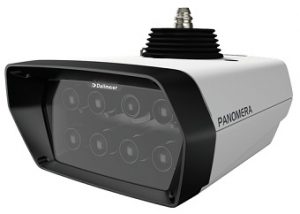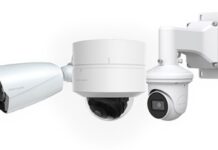
‘Making things easier’ – Under this maxim, the Panomera multifocal sensor systems by video technology manufacturer, Dallmeier have guaranteed maximum image and analysis data quality with minimum camera units for ten years now. The latest generation of the Panomera S-Series features a completely new design and offers numerous innovations, from the one-man mounting concept to contactless front glass cleaning, and above all, superior video analysis capabilities.
The Panomera multifocal sensor systems differ from other cameras in that they combine a total overview with an unlimited number of detailed zooms in high resolution. The detail zooms can simply be opened in the overall image with a click of the mouse, like ‘virtual’ PTZ cameras, not only live but also in the recording. This is made possible by the patented use of up to eight sensors with different focal lengths in a single system. In this way, a much greater expanse can be captured with each camera. In the words of the manufacturer, Dallmeier, this results not only in significantly improved operability and overview, but also saves up to 50% or more in operating and infrastructure costs, depending on the application area.
Besides the advantages in image capture and operation, the latest Panomera generation is set apart by its superior analysis capabilities, as they combine a precisely plannable/definable image quality (and therewith data quality) with the most advanced analysis technology. In traditional single sensor as well as multi-sensor camera technologies, image resolution and thus also analytical capability diminishes continuously in the direction of the image background. In contrast to this, the cameras of the Panomera S-Series capture a very large expanse or long distances with a minimum resolution over the entire area.
Panomera is therefore able to monitor and analyse complex context with the same high data quality, even over extremely large expanses. If an application requires, for example, a minimum resolution density of 62.5 pixels per meter, according to DIN EN 62676-4, over 50,000 square meters can be covered with just one camera system, which is more than sufficient for common object classifications. Even at the highest DIN resolution density of 250 pixels per meter, for the identification of unknown persons that can be used in court, one system still manages up to 3,100 square metres. For this purpose, each of the up to eight sensors in a Panomera is equipped with an analysis unit of the latest SoC generation with integrated Artificial Intelligence (AI), so that the analysis can be carried out directly in the camera (on the edge), from people counting through to ‘Appearance Search’.











